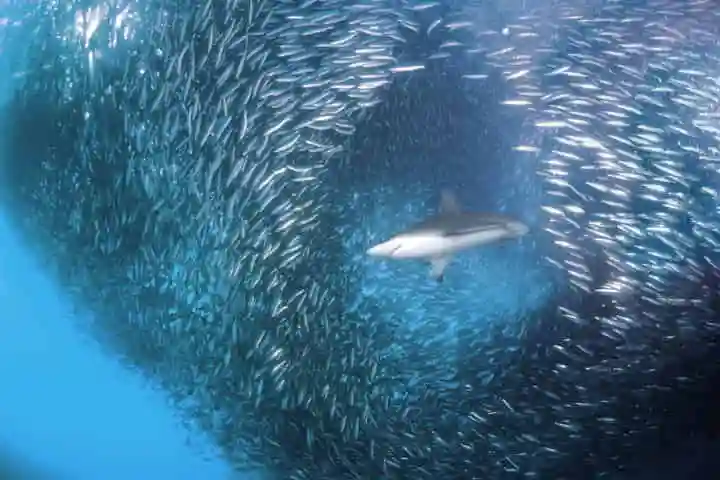Described as the biggest migration event of the world and called the Sardine Run, it has always fascinated and intrigued scientists and experts. The event, which is spectacular, is considered the “Greatest Shoal on Earth”. It involves hundreds of millions of sardines moving from their cool-temperate core range to the Indian Ocean’s warmer subtropical waters, on the east coast of South Africa.
What is it that makes the sardine go for this run? Triggered by the upsurge of cold water on the southeast coast, the sardines swarm north, and they reach the area between the coast and a southward flowing hot current. The latter is beyond the capacity of the sardines to bear. It is here that a large number of predators like dolphins, sharks, seabirds and whales gather to prey on them.
According to sciencedaily.com, a new study conducted by scientists from South Africa and Australia tested the theory that the Sardine Run is spawning migration of a distinct species from the east coast stock which is adapted to warm subtropical conditions.
The study was published in the journal Science Advances.
For the purpose of the study, the researchers created genomic data for sardines numbering in hundreds from around South Africa. Included in this was data from regions that are associated with difference in water temperature along the coast.
The analyses of the data reflected two sardine populations in South Africa. One is from the cool temperate west coast (Atlantic Ocean) while the second is from warmer east coast waters (Indian Ocean). Interestingly, both the populations had adapted to their native region temperature range.
Professor Luciano Beheregaray of the Flinders University Molecular Ecology Lab, who is also one of the study authors remarked: "Surprisingly, we also discovered that sardines participating in the migration run are primarily of Atlantic origin and prefer colder water.”
Another author Professor Peter Teske from Johannesburg said: “The cold water of the brief upwelling periods attracts the west coast sardines, which are not adapted to the warmer Indian Ocean habitat.”
Also read: Fish fins trigger research on airplane wings of the future
Teske went on to add: "This is a rare finding in nature, since there are no obvious fitness benefits for the migration, so why do they do it? We think the sardine migration might be a relic of spawning behaviour dating back to the glacial period. What is now subtropical Indian Ocean habitat was then an important sardine nursery area with cold waters.”
The spectacle of this migration run which is visually breathtaking attracts droves of tourists from across the globe who are eager to witness this underwater performance.
This, however, may not be there forever.
Also read: Female octopuses repel amorous males by flinging debris and shells!
"Given the colder water origins of sardines participating in the run, projected warming could lead to the end of the sardine run," argued Beheregaray.
Though a very large number of fishes are involved, in the run only a small portion of the South African population is involved. So, while nature's arresting migrations may come to an end, its effect on the population as a whole is expected to be insignificant.




















